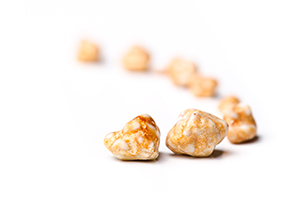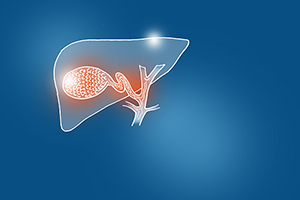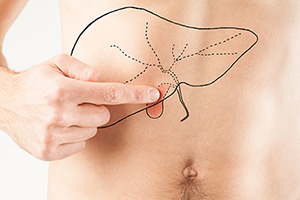In last week’s newsletter, I debunked a list of common myths about gall bladder disease and gallstones. This week, I have even more of these misconceptions to dispel. Without further ado:
Don’t yield to the temptation to get gall bladder surgery, because the incidence of “post-cholecystectomy syndrome” is as high as 50%: Post-cholecystectomy syndrome occurs when patients have their gall bladders out and continue to have symptoms. The cause is not identifiable in every case. While sometimes a stone gets lodged somewhere else in the biliary tract, I suspect that the occasional failure of gall bladder surgery to alleviate symptoms of pain, bloating, and indigestion is that another problem was overlooked—like SIBO (small intestine bacterial overgrowth), food intolerance, or hydrochloric acid or pancreatic enzyme deficiency. In any case, alarmist websites exaggerate the prevalence of post cholecystectomy syndrome, which is actually more like 5 to 10%.
Patients over 70 are at high risk of dying from gall bladder surgery, so it should be avoided if at all possible in elderly patients. On February 22, 1987, famed pop-artist Andy Warhol succumbed to complications of gall bladder surgery at the age of 58. But this occurred prior to the advent of laparoscopic cholecystectomy, which has minimized the dangers of gall bladder surgery. Additionally, Warhol had delayed gall bladder surgery until he suffered a serious infection and he was weakened after taking several bullets in a previous assassination attempt, was anemic, and probably malnourished. The latest statistics show that death from elective gall bladder surgery is as low as 0.15%
Whereas age used to be a contraindication to surgery, improved surgical and anesthesia techniques now enable even patients well into their 80s and 90s to breeze through gall bladder operations. Severe heart and lung disease sometimes preclude surgery, but most older patients with gallstones are considered eligible.
After you have your gall bladder removed, you’ll malabsorb fat, and therefore you’ll need to follow a low-fat diet forever. This line is parroted endlessly on popular websites, but, even after exhaustive research, I could find no evidence that people become fat-intolerant after cholecystectomy. In fact, one of the few articles on the subject, a paper dating back to 1964, states that “It may be assumed that removal of the gall bladder does not influence the absorption of butter fat and olive oil, and that the evacuation of the gall bladder is not essential for the absorption of these types of fat in man.”
This makes sense because the gall bladder does not make bile, it only stores it. When your gall bladder is missing, instead of releasing stored bile to meet the occasional demands of a meal, bile is released continuously. Enough bile is usually secreted to digest fatty meals. Humans are among few animal species to even have a gall bladder.
After you’ve had your gall bladder taken out, you’ll need to take pancreatic enzymes and bile supplements forever. Again, there is no evidence that additional digestive support is required even after cholecystectomy.
People without gallbladders frequently suffer from fat-soluble vitamin and essential fatty acid deficiency, so should be taking (emulsified) A, D, E, and K, and Omega 3 supplements forever. I searched in vain for references to support the notion that, without normal bile secretion, individuals suffer from critical nutrient deficiencies. They just weren’t there. On the contrary, many people gain weight after gall bladder surgery, perhaps because the “brake” that gall bladder colic applies to overeating has been removed.
“Gall bladder flushes” are effective at removing gallstones. This is among the most controversial propositions in gall bladder disease lore. Many books, magazine articles and websites extol the benefits of the “gall bladder flush” which is said to expel stones from the gall bladder. Enthusiastic users report numerous greenish “stones” appearing in their stool.
Typically, users are encouraged to fast while drinking apple juice and/or herbal tea, followed by a “flush” consisting of olive oil and lemon juice.
But a 2005 analysis in Lancet revealed that the composition of these so-called “stones” in no way resembled that of true gallstones (bile salts, cholesterol, and phospholipids), and in fact consisted only of greenish, congealed olive oil. Potassium in the lemon juice creates a kind of soap via kitchen chemistry, making the globules appear to stick together with a semi-solid consistency. While not effective in passing gallstones, there’s the potential risk that a high-fat flush of olive oil will trigger gall bladder contraction, precipitating a painful gall bladder attack.
Stones can easily be dissolved with prescription or herbal medicines. Until the advent of safer surgical techniques in the 90s, it was thought advisable to attempt to dissolve gallstones prior to resorting to definitive removal. Medical therapy was undertaken with Urso- and Chenodiol, but it was found to only be successful for radiolucent gallstones—a less common kind, consisting only of cholesterol. This technique is rarely used today.
Additionally, a myriad of gallstone remedies can be found on the web, each purporting to dissolve stones. The only formula for which evidence exists—albeit equivocal—is Rowachol, a European formula not sold in the U.S. A 1979 study showed gallstone dissolution in 7 patients, but subsequent research is scant.
In a future installment, I’ll enumerate ways that you can keep your gall bladder healthy, and avoid surgery.








